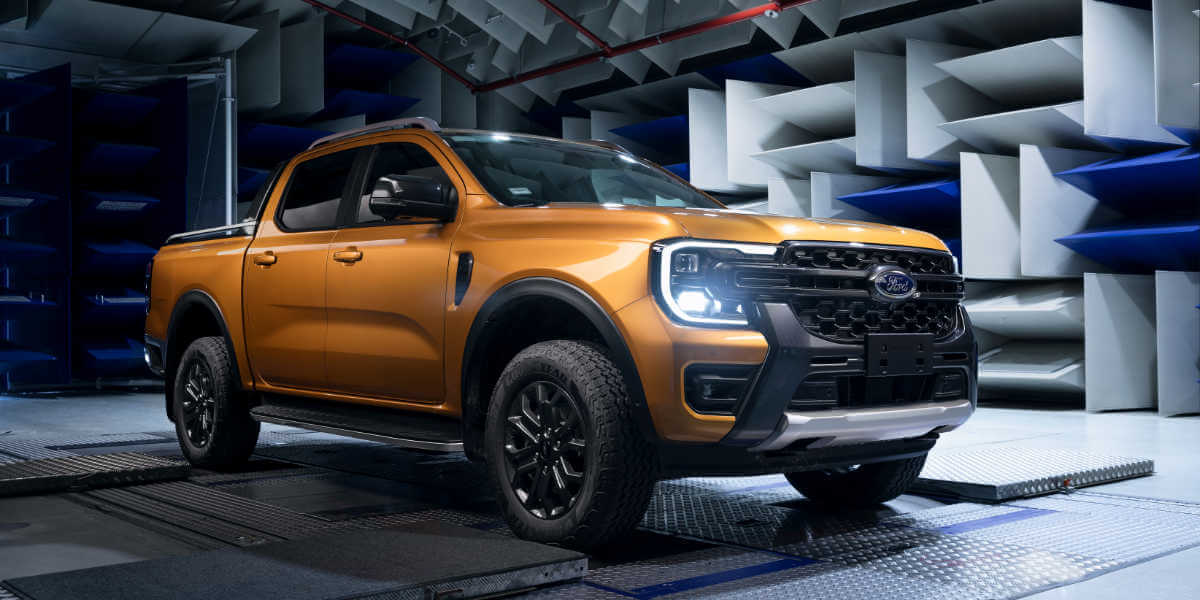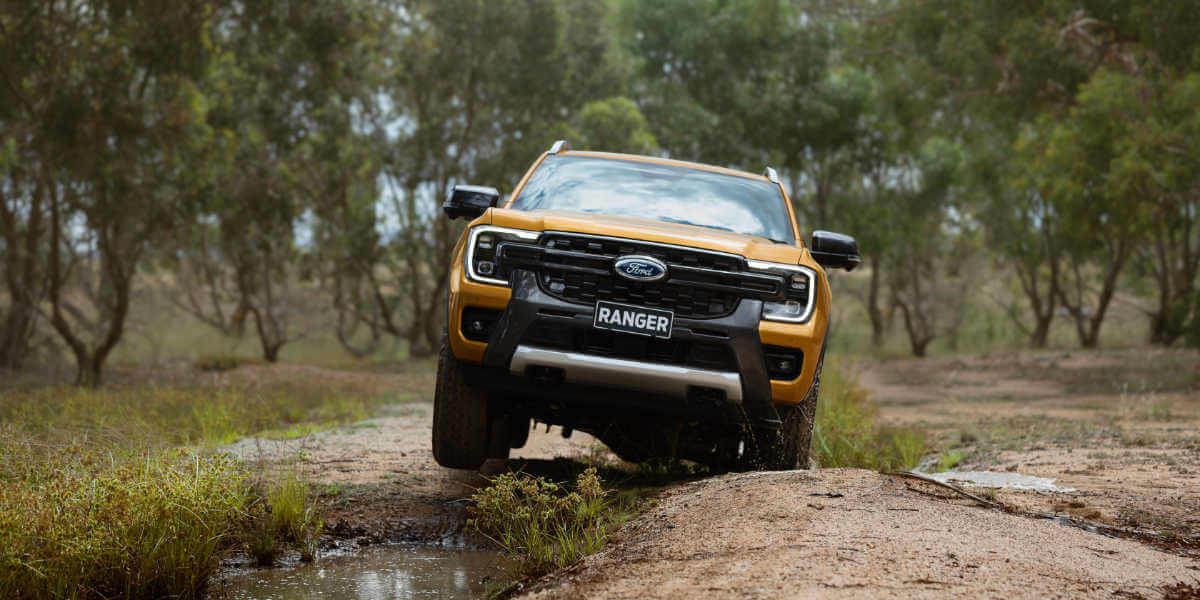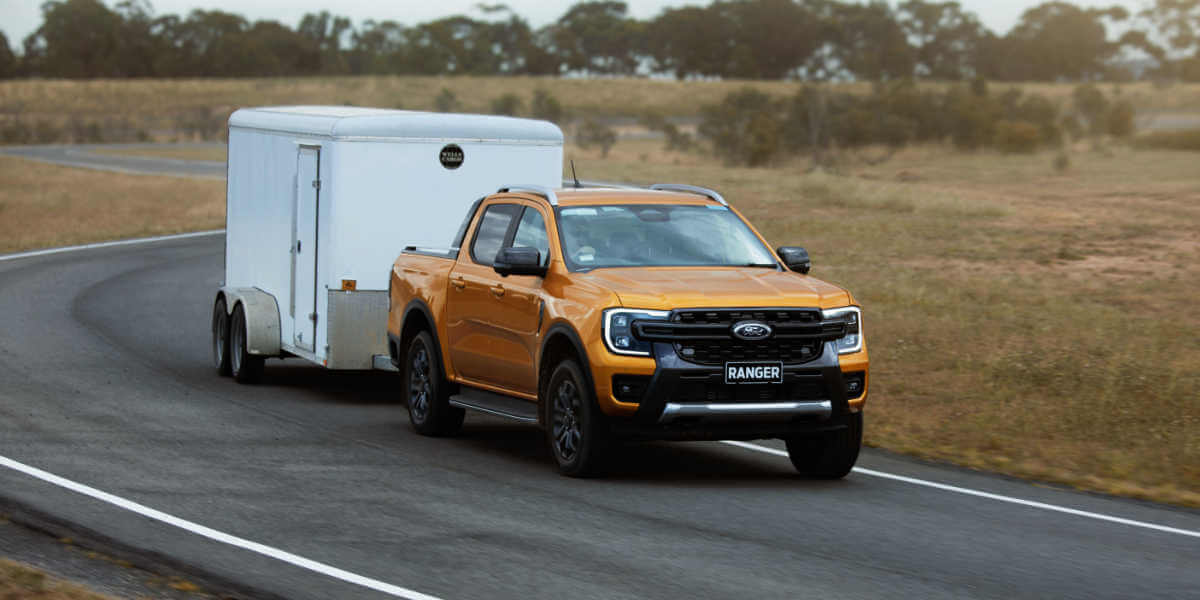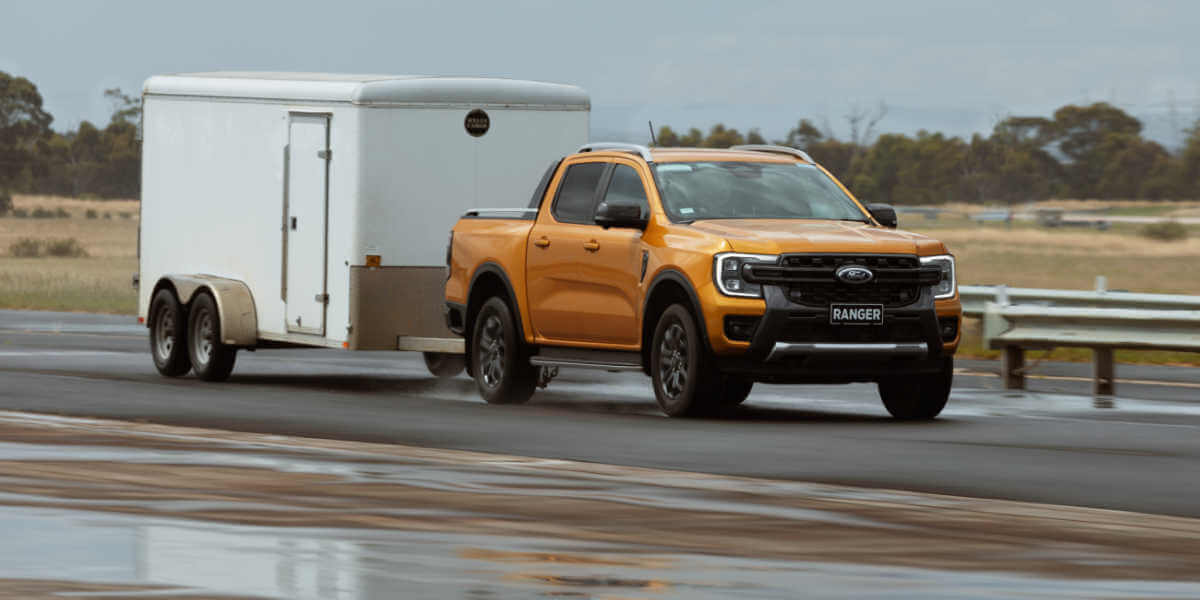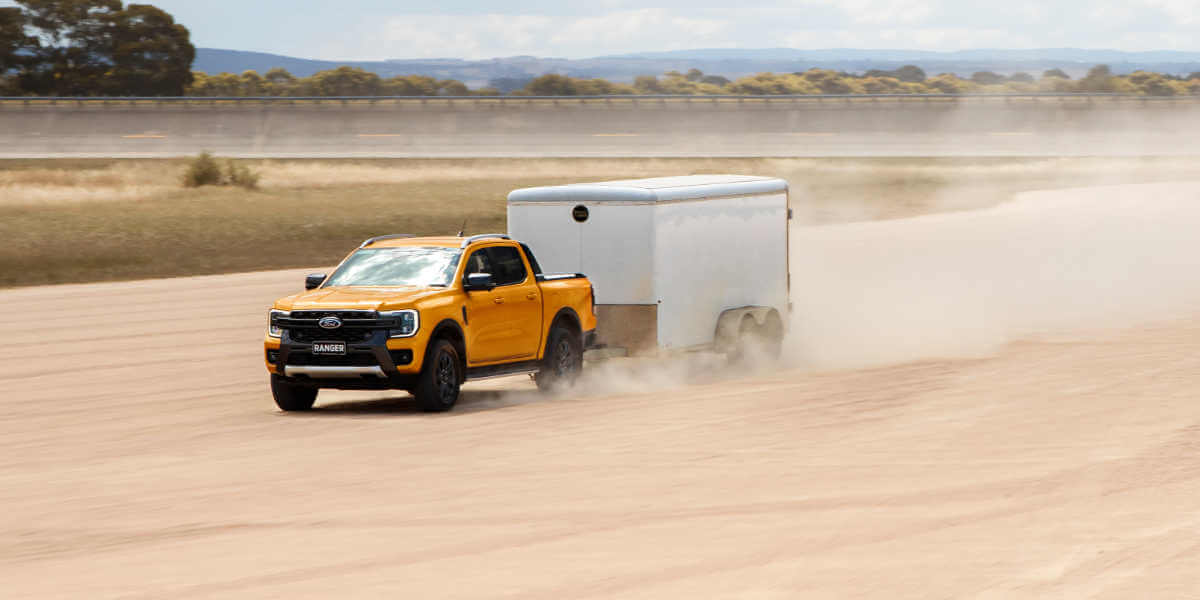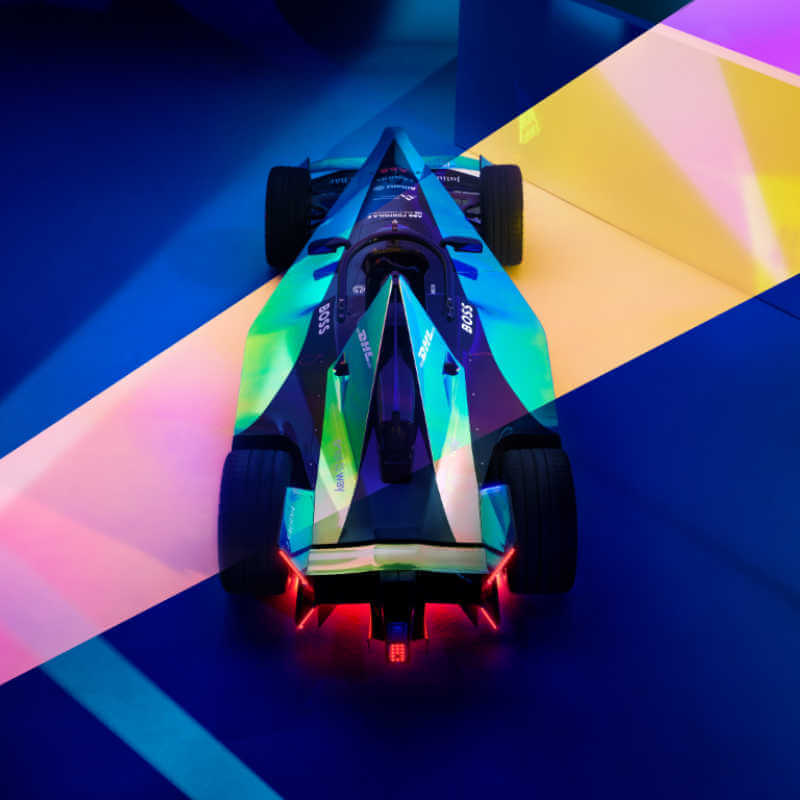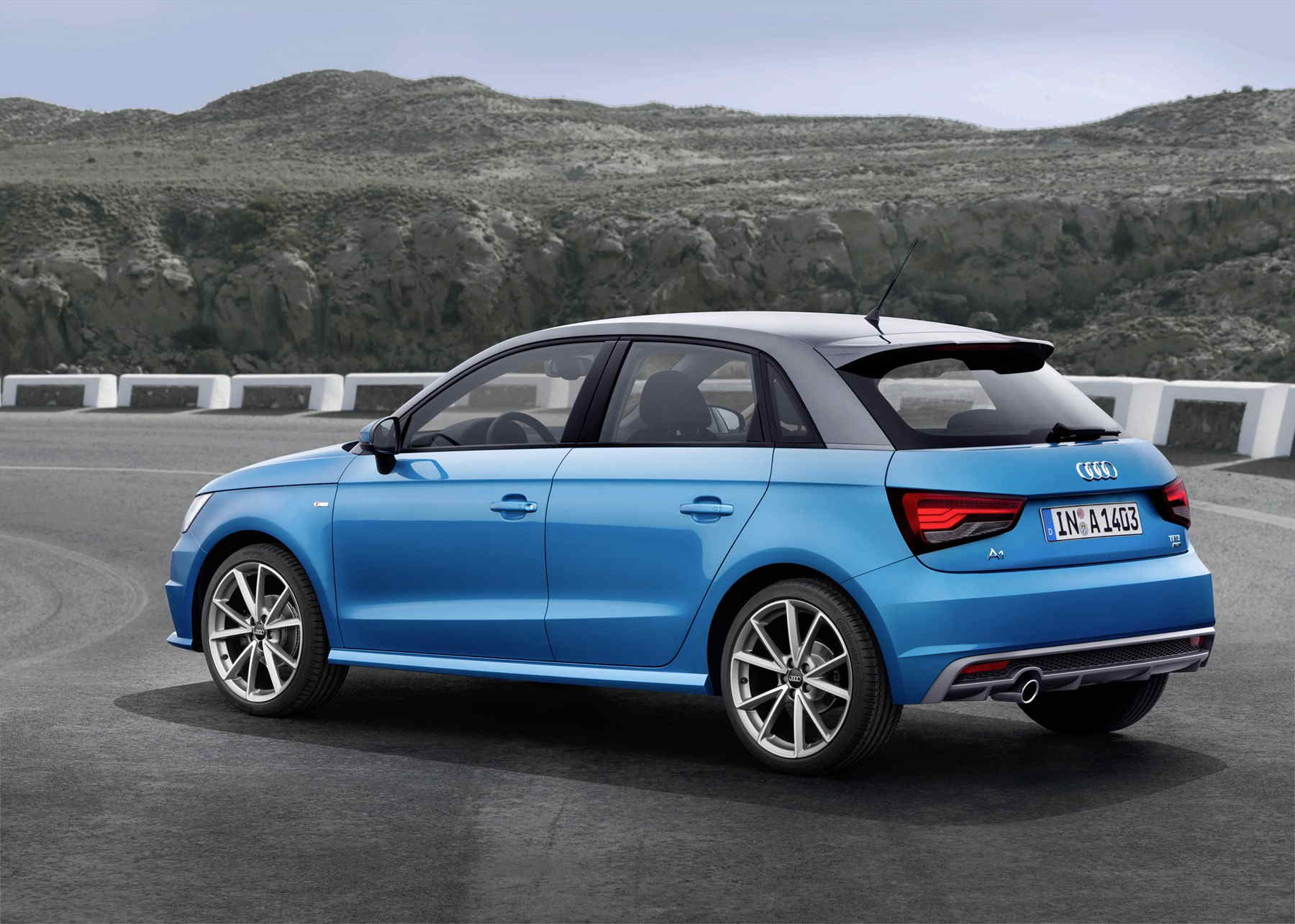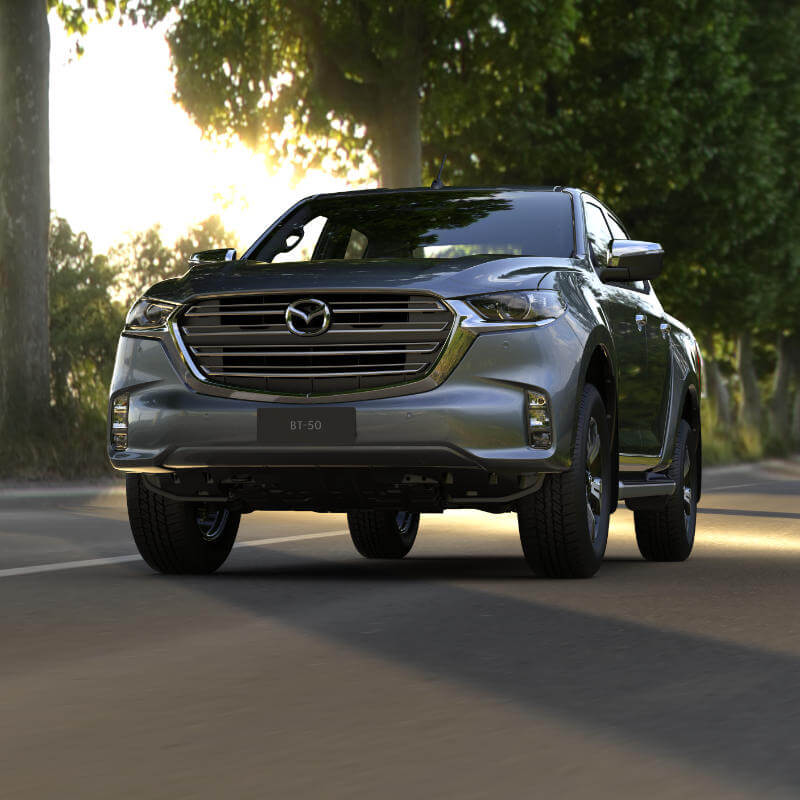Next-Gen Ford Ranger Takes Power, On- and Off-Road Capabilities to the Next Level
The Ford Ranger has built a reputation around the world for being a tough and capable pickup, with more and more customers trusting it to deliver years of dependable service for both work and play.
Next-gen Ford Ranger article by Ford on QuickPic.
Ford has continued to strengthen customer trust in the Ranger by listening to owners and delivering on features that matter to them most. Next-gen Ranger takes this to the next level with a truck that offers customers exceptional towing and hauling, incredible off-road capability and a choice of durable and fuel-efficient engines.
“The Ford product development team’s goal with the next-gen Ranger was to deliver a vehicle that met the needs of customers in more than 180 different markets and be the one truck the world trusts to tackle anything,” said Graham Pearson, vehicle program director for Ranger. “And to be that one truck the world trusts, next-gen Ranger had to excel in several key areas: stance and stability, towing, off-road capability, performance, and drivability.”
“Ford knows trucks,” he added. “We want to give our customers greater levels of performance and capability, expand Ford’s credibility on the worksite, and offer the most desirable lifestyle pickup with more distinct styling, advanced technology, and comfort.”
Powertrains for work, family and play.
Whether a customer’s priority is fuel economy, refinement, towing or hauling the powertrains chosen for next-gen Ranger will provide customers with the best performance and capability, according to Pritika Maharaj, Ranger and Everest program manager.
The headline grabber is the addition of Ford’s proven 3.0-litre V6 turbodiesel, which is being offered on both Ranger and the Everest SUV. “We’re offering this engine specifically because some customers told us they wanted more power and torque for towing and extreme off-roading,” said Maharaj.
Making up to 184kW of power and 600 Nm of torque in both Ranger and Everest, Ford engineers treated the 3.0-litre V6 turbodiesel like a brand-new engine. “We did a lot of application calibration and validation work in both the US and Australia to make sure it would meet the needs of Ranger and Everest customers,” said Maharaj.
“The 3.0-litre V6 turbodiesel delivers,” added Maharaj. “When you drive a Ranger with the V6 turbodiesel, it feels like a much bigger truck. And it feels strong in the sense that it’s got plenty of power and torque, which is exactly what our customers told us they wanted.”
But the 3.0-litre V6 turbodiesel also is strong in the literal sense of the word with the compacted graphite iron (CGI) block around 75 percent stronger and 75 percent stiffer than the iron used in traditional engine blocks.
In addition to the 3.0-litre V6 turbodiesel engine, the next-gen Ranger will continue to offer the choice of the proven Single-Turbo and the Bi-Turbo 2.0 inline four-cylinder diesels.
The Single Turbo comes in two different performance levels, offering 110kW and 350Nm, and 125kW and 405Nm.
Ford’s proven 2.0-litre Bi-Turbo makes 155kW and 500Nm and will continue to be available in Everest as well. This engine boasts a clever bypass system that determines the optimum operating mode, meaning the turbochargers can operate in series (at lower engine speeds for enhanced torque and responsiveness) or the smaller turbo can be bypassed allowing the larger turbocharger to deliver high power.
“We know our customers push their Rangers to the extreme, so that’s how we test them,” Maharaj said. “We push them to the limit initially on dynos, where they get exposed to extreme loads, temperatures, and aggressive duty cycles. Then we test the vehicle in markets from the frigid cold areas of Europe and New Zealand to the hot humid markets of Southeast Asia.
“Whether it’s our 3.0-litre V6, 2.0-litre Single-Turbo, Bi-Turbo or 2.3-litre EcoBoost petrol, we simulate extreme customer usage by running these engines for more than 700 continuous hours at full throttle. That’s like going around the world six times at full throttle. And we do that in temperatures ranging from -40 degrees Celsius to more than 50 degrees Celsius,” she said.
Transmission choices include a 10-speed auto that also sees service in the Ford F-150 and F-150 Raptor and has notched up more than six million kilometres of testing, including more than 3,900km of sanctioned off-road racing, including at the Baja 1000. This transmission will be available on the 3.0-litre V6 and 2.0-litre Bi-Turbo engines, across Ranger and Everest.
The current six-speed automatic transmission available on Ranger will continue along with the introduction of a new five- and six-speed manual transmission for Single Turbo diesel variants. The new manual transmission was four years in development across four continents and boasts a new gear set for smoother shifts.
Next-Gen Ford Ranger is ready for the road less travelled.
“Our customers told us that one of the reasons they love Ranger is because it’s one of the best vehicles on the road for ride comfort and car-like performance. So, retaining that and balancing it with off-road performance has been key throughout the development of next-generation Ranger,” said Rob Hugo, dynamic experiences supervisor, Ranger.
A 50mm track and wheelbase increase for next-gen Ranger has improved vehicle stability on- and off-road, said Hugo. It has also improved the front approach angle to 30 degrees (up from 28.5 degrees in the prior model) and rear departure angle to 23 degrees (up from 21 degrees in the prior model). The latter is the same when a towbar is fitted due to packaging improvements.
Further to the track increase which helped the team increase the width of next-gen Ranger’s tray for a more versatile load space, the rear dampers were moved outboard of the springs which makes for a more controlled ride whether the vehicle is laden or not.
“The outboard dampers have allowed us to tune a more controlled ride whether the vehicle is carrying a heavy load or not and solve a common complaint of pickups with inboard mounted dampers that they can bounce or skip when unladen,” Hugo said.
Whether you’re a traditionalist or someone looking for additional peace of mind on the road, Ford is offering two four-wheel drive systems for next-gen Ranger. The base four-wheel drive is a ‘part-time’ system with a two-speed electronic shift-on-the-fly transfer case offering 2H, 4H and 4L as modes of operation. Next-gen Ranger is also available with an on-demand four-wheel drive system (2H, 4A, 4H, and 4L) which allows Ranger to be driven in four-wheel drive on high-traction surfaces via its 4A (automatic) mode. When selected, the system continuously distributes power between the front and rear axles for optimum performance in all on-road conditions.
“This means a Ranger driver can just leave the truck in four-wheel drive (4A) and head off down the highway, down a country road, over a snowy mountain or across a sand dune without having to do anything else,” Hugo said.
Next-gen Ranger continues to be offered with an electronic rear differential lock which can be activated via the SYNC® screen. A differential-lock allows both wheels on a specific axle to turn at the same speed providing additional traction when you’re off-roading.
Selectable drive modes for added confidence on the go.
It used to be that only Ranger Raptor offered selectable drive modes, but now next-gen Ranger will offer up to six, depending on the variant and market. The modes are: Normal, Eco, Tow/Haul (auto only), Slippery for on-road, and Mud/Ruts and Sand for use off-road. These modes adjust everything from the gearshift to throttle response, traction and stability controls, ABS and more.
“These selectable drive modes are a very simple way of getting advanced traction to the wheels the way it needs to be delivered without having to be an expert,” said Hugo.
Tow / Haul mode is a brand-new drive mode and is designed for those towing or carrying a heavy load in their Ranger. Selecting Tow / Haul mode optimises the gear shift timing to maintain power when you’re climbing up a hill or deliver the right amount of engine braking when you’re travelling down a hill. Next-gen Ranger continues with a maximum braked towing capacity of 3,500kg with a 350kg towball download limit.
Continuing the towing theme, next-gen Ranger – depending on the model and market – now features a trailer connection checklist and trailer light check to simplify the process of hooking up your trailer. For added peace of mind, Ranger’s BLIS® driver assistance technology will also allow for drivers to programme the size of their trailer for added coverage of their blind spots.
In addition to the selectable drive modes, next-gen Ranger boasts a dedicated off-road screen on the SYNC infotainment system. At the press of a button, owners can access the off-road SYNC screen, which shows driveline and diff lock settings, steering angle, vehicle pitch and roll angles, as well as a front camera view with predictive overlay guidelines.
Capabilities on demand.
More user-focused than ever, next-gen Ranger features six upfitter switches on the overhead console to make after-market customisation easy. The six pre-wired switches are connected to the power distribution box, and each circuit is individually fused from 10A to 30A allowing for the connection of a range of accessories.
But that’s not all. To further help customers, the vehicle has been pre-wired with circuits placed around the vehicle in locations commonly used for the fitment of after-market equipment, with two sets of blunt cut sealed circuits under the hood (near the radiator support and the fuse box) and one at the rear of the truck, close to the trailer hitch.
There’s also a dedicated space under the bonnet for the installation of a second battery for use as an auxiliary power source to keep camping accessories running.
To protect vital components when you’re off-road, next-gen Ranger boasts a raft of protective underbody shields for the steering, sump, transmission and transfer case. These shields are made from pressed and folded laser-cut steel. The recessed mounting bolts are protected from damage and easy to remove for servicing, and because the shields are bolted directly to the chassis they add to the structural integrity of the vehicle.
The next-gen Ranger is adventure-ready with roof top load limits of 350kg static and 85kg dynamic. And a range of cargo management solutions in the loadbox makes next-gen Ranger the most versatile yet, from adjustable cleats on each side, to tray-mounted tiedowns and styled box rails, tailgate clamp pockets and box capping with six structural mounting points for after-market accessories. Depending on the variant and market, payload runs from 925kg to 1,191kg.
Like the current Ranger, next-gen Ranger offers a maximum water wading depth of 800mm at 7km/h.
“Many of our customers take their Rangers through water – rivers, creeks, and so forth. So, we gave Ranger a bath at various speeds, at ever-increasing water depths up to 800 mm,” Hugo said.
“The physical testing is on top of the extensive computer-aided engineering work the team does to ensure the aerodynamics of the vehicle work as well in water as they do on the road, and to ensure water doesn’t get into anything we don’t want it to, and that all the critical systems work on the vehicle afterwards, like the lights and horn. We also conduct our water wading tests in reverse gear too, because that’s what people do in real life.”
Next-Gen Ford Ranger is tested to the extremes.
The next-gen Ford Ranger has undergone millions of kilometres of testing in 10 different countries to ensure it meets, or exceeds customer standards for capability, quality, reliability and durability.
As well, the Ford Ranger prototypes clocked up thousands of kilometres at Ford’s You Yangs Proving Ground testing facility near Melbourne, where durability testing continued 24/7 on specific components, like the suspension, body structure and powertrains.
John Willems, chief program engineer for the next-gen Ranger, said that well before any physical testing occurred, Ford made extensive use of computer-aided simulations during the development of the pickup. This was to optimise critical components and systems to restrict pathways of structurally-borne and airborne road noise from entering the cabin.
“Early in the development of next-gen Ranger, a lot of testing was done analytically, using computer software,” Willems explained. “After this we built 200 prototype Rangers to undergo a raft of really challenging tests, from the dust-choked Australian Outback and arid Middle East to the humid streets and highways of Thailand as well as sub-zero temperatures in Europe and North America.
“We replicated the exact conditions our customers may encounter with Ranger, to ensure that when the new Ford Ranger leaves the showroom, it can tackle almost any situation both on and off-road,” Willems said. “This includes extreme humidity in Thailand, cold weather in New Zealand and 50-degree temperatures that customers encounter in the Middle East.”
Apart from testing the whole vehicle in real-world environments, specific testing drilled down into each component, from suspension, towbars, frames, doors, tailgates, body panels, bumpers, seats, and anything else the customer can feel, touch, push or slam. All were tested to the point of destruction in a controlled environment to uncover any potential weak points.
“The purpose of testing and stressing all of these components is to make sure they’re built to deliver safe and dependable service throughout the life of the vehicle,” Willems said. “We know our customers cover thousands of kilometres in their Rangers, often in extreme conditions, so we need to ensure the pickup is a safe, cossetting and quiet environment for them.”

